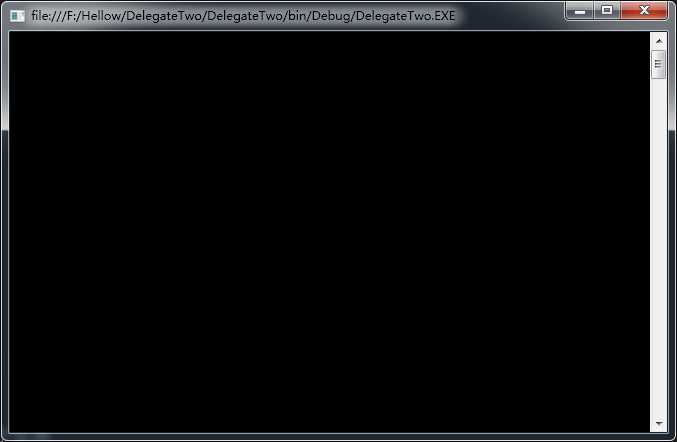标签:for 种类型 == yield 思路 总结 eof ict lam
嗯~这篇就讲讲Linq吧!
之前讲过Lambda最后进化到了令人发指的地步:
Func<string, int> returnLength; returnLength = text => text.Length; Console.WriteLine(returnLength("Hellow"));
来,把这个lambda表达式拿出来(text => text.Length),好眼熟啊,好像在某个地方用到过。
这个东西直到现在都是我见过的最好的表达式,他虽然不是银弹,但却是你开发"兵器库"中一个非常强大的兵器。
Linq有两种写法,这篇来讲操作符。先说说组成哈。
集合.linq操作符 (委托,方法,Lambda);
例如:
list<int>.Select(x => x + 1);
Select:循环集合 条件是 集合里的每一个int + 1;
来说说linq是怎么组成的吧。
算了,直接看linq的源代码吧。Select的哈
public static IEnumerable<TResult> Select<TSource, TResult>(this IEnumerable<TSource> source, Func<TSource, TResult> selector)
静态方法有this说明是一个扩展方法,this在IEnumerable前,一个IEnumerable<TResult>的扩展方法,参数是一个Func<TSource, TResult>的泛型委托。
由于参数是委托,所以linq的括号里可放入,符合条件的方法,一个类似的委托,或者Lambda表达式。
其中我们最常用的就是Lambda表达式。因为是委托的终极进化,最简便的一个了。
linq有一个延迟加载的特性,最初我以为是委托的原因(因为委托就是只有在执行Invoke的时候才执行),后来去网上查询资料。
发现延迟加载完全拜一个 yield return 所实现的。
来看一看这个诡异的东西吧。。。
public IEnumerable<int> OutValue(List<int> list) { foreach (var a in list) { Console.WriteLine(a); yield return a; } }
这是一个yield return返回IEnumerable的方法,内容很简单就是输出一下集合里的值,然后yield return了。
然后我调用它的时候奇怪了。
test.OutValue(list);
输出:

嗯~,换一个思路试一下,既然你不输出啥,那我再循环一次看看吧!
var val = OutValue(list); foreach (var a in val){}
我没有加任何操作,只是单纯的循环了一下。输出结果却是:

哼哼,显而易见了。延迟加载拜这个yield 所致啊。
如果我们要简单的实现一个Select的话,很简单:
public static IEnumerable<TResult> Select<TSource,TResult>(this IEnumerable<TSource> source,Func<TSource,TResult> selector) { foreach (TSource element in source) yield return selector(element); }
粗暴明了,当然源代码不是这样的。。。但意思差不多。foreach循环这个集合,yield return 执行这个selector 委托,委托实例是什么?就是你穿的Lambda,方法,委托啦~当然必须是满足条件的。
yield 语句只能出现在 iterator 块中,该块可用作方法、运算符或访问器的体。而foreach内部就是iterator加上yield实现的。
当用到Select返回的值时,yield return 会去执行这个Func委托。这就是延迟加载的原理吗?(请各位大佬指正,小弟可能讲的不正确,欢迎指正哈。)
看看别的操作符是怎么实现的
[__DynamicallyInvokable] public static int Max(this IEnumerable<int> source) { if (source == null) { throw Error.ArgumentNull("source"); } int num = 0; bool flag = false; foreach (int current in source) { if (flag) { if (current > num) { num = current; } } else { num = current; flag = true; } } if (flag) { return num; } throw Error.NoElements(); }
Max只支持对int集合的扩展,内部是不是非常简单,就是生命一个int变量存最大值,一个bool类型来判断是否执行了这个foreach循环。
来看看经常用的排序吧!
[__DynamicallyInvokable] public static IEnumerable<IGrouping<TKey, TSource>> GroupBy<TSource, TKey>(this IEnumerable<TSource> source, Func<TSource, TKey> keySelector) { return new GroupedEnumerable<TSource, TKey, TSource>(source, keySelector, IdentityFunction<TSource>.Instance, null); }
但最后执行的原理在这里。。。
[__DynamicallyInvokable, IteratorStateMachine(typeof(Lookup<, >.<GetEnumerator>d__12))] public IEnumerator<IGrouping<TKey, TElement>> GetEnumerator() { Lookup<TKey, TElement>.Grouping next = this.lastGrouping; if (next != null) { do { next = next.next; yield return next; } while (next != this.lastGrouping); } yield break; }
Lookup<Tkey,TValue>是.NET3.5中新增的,它类似与Dictionary<Tkey,TElement>,但把键映射带一个值集上.这个类在程序及System.Core中实现,用System,Linq命名空间定义.
Grouping是最终实现排序的那个程序。取最后一个,判断非空,然后进行do{}while()循环。也是用了yield return延迟加载。
where里的委托与select是不一样的;
public static IEnumerable<TSource> Where<TSource>(this IEnumerable<TSource> source, Func<TSource, bool> predicate)
Where委托的返回值时bool类型,但扩展方法又要返回IEnumerable<TSource>类型的。
大体上的意思就是这样的:
public static IEnumerable<TSource> Where<TSource>(this IEnumerable<TSource> source, Func<TSource, bool> predicate) { foreach (TSource element in source) { if (predicate(element)) { yield return element; } } }
大致上是这样的,我理解的是.当然源代码不是这样的。当委托Func为true时才会yield return。也是有延迟加载的特性的。。。
等等等。。。太多了就不一一列举了。
那么会有人问了,我不想用这个延迟加载怎么办,我就想跟foreach循环一样,我就想立即加载。
肯定是可以的,有要求肯定是会满足的。
很简单,将返回值转换为另外一种类型即可,Linq的查询操作符中包含了转换操作的定义:ToArray(转换为数组)、ToDictionary(转换为字典)、ToList(转换为集合),使用这些转换运算就可以将延迟执行转换为立即执行,也就可以避免延迟执行了。
就写这么多吧。毕竟我的理解也是有限的,还请各位大佬们指正。
有错误的地方欢迎各位大佬指出来,我会努力进步,努力改正的。
标签:for 种类型 == yield 思路 总结 eof ict lam
原文地址:https://www.cnblogs.com/yingxl/p/9009406.html